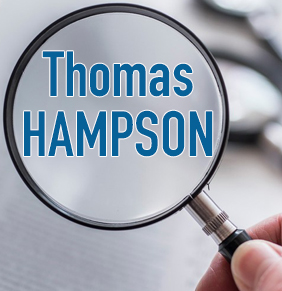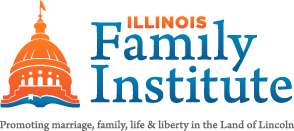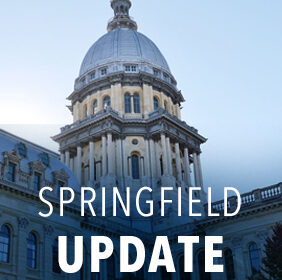
Please note: these insights draw on the author’s extensive experience
as an intelligence analyst and criminal investigator.
So, why did our government turn a blind eye to Jeffrey Epstein’s activities for so long, and why are they now trying to claim there is nothing to see? Some argue that it’s an effort to protect wealthy and prominent perpetrators—some of the people who show up in Epstein’s black book, who flew on Epstein’s plane that was nicknamed “The Lolita Express” since the early 2000s, or who visited Epstein’s Island, which was dubbed “Orgy Island.”
While it is recognized that not everyone who shows up on these lists is guilty of sexually exploiting the children Epstein recruited, there is a sense that within these lists is a subset of people who are guilty of many crimes against children. And our government is letting them off Scot free because of their supposed importance and influence. But who is being protected and who is protecting them?
The belief is that our government investigators know.
I have no doubt this is true. Our government knows which people on the lists that have been made public—and the many more who haven’t appeared on these lists—have sexually abused children supplied to them by Epstein. In some cases, they can prove it; in others, they can’t. But it’s unlikely they’ll ever see justice this side of eternity.
The reason, quite simply, is that our government will claim it is not in the national security interests.
I don’t think I could prove this in a court of law since the evidence is not publicly available. However, the circumstantial case is excellent. It just requires presenting a substantial amount of background information to make sense of it all. Here goes.
From an early age, it was clear to everyone that Jeffrey Epstein was brilliant. He was so gifted that he moved up two grades in school. He skipped third grade at elementary school and eighth grade at his Junior High School. He graduated from Lafayette High School in Brooklyn, New York, at age 16.
After graduation, Epstein enrolled at Cooper Union for the Advancement of Science and Art, where he attended for two years. It is an elite private college, ranking on par with the Massachusetts Institute of Technology (MIT) or Stanford University, and situated in Lower Manhattan, New York City. Founded in 1859 by inventor and industrialist Peter Cooper, it is free to all regardless of race, gender, or wealth. For some unknown reason, Epstein dropped out in 1971 without graduating. From 71 to 74, he attended NYU’s Courant Institute of Mathematical Sciences, but instead of enrolling in a degree program, he took individual classes.
NYU was not free. During his attendance, tuition was between $2,000 and $3,000, which was comparable to the tuition at Harvard. He drove a taxi to pay for his college while continuing to live at home with his parents in Sea Gate, a gated community composed mainly of middle-class Jewish and Italian families where he grew up.
Before earning a degree from NYU, Epstein applied for a job at the prestigious Dalton School in New York. When he applied, Donald Barr (father of future U.S. Attorney General Bill Barr) was the headmaster and was known for hiring based on talent, rather than credentials. Epstein started as a math teacher at the school in the Fall of 1974. By then, Donald Barr had left due to disagreements with the board.
Epstein taught at the school from the Fall of 1974 to the Spring of 1976. The headmaster who succeeded Barr, Peter Branch, dismissed Epstein because “he was a young teacher who didn’t come up to snuff.” He later stated that he could recall no inappropriate behavior on the part of Epstein. Students remember Epstein as charismatic, dressing flamboyantly, frequently socializing with students outside class hours, and as someone who was particularly attentive to female students.
Epstein also made it a point to get to know the influential parents of the children he taught. One of the parents was Alan Greenberg, a Senior Partner at Bear Stearns. When Epstein was let go by the Dalton School, Greenberg hired Epstein to work in the Options department. That started a five-year rise through the ranks. After four years, Epstein became a limited partner of the firm, the youngest ever to achieve that position.
Epstein became an expert at developing tax mitigation strategies for clients and at tracking labyrinthine international financial transactions. He also further developed his skill at cultivating relationships with the wealthy and powerful.
His tenure at Bear Stearns was cut short due to Epstein’s breach of Securities and Exchange Commission (SEC) rules, a Regulation D violation. He loaned money to a friend who was also a client, which is not allowed as a broker. He also made distributions of new issues in a manner that violated company policy but did not violate the law. Rather than accept a $2,500 fine and a 60-day firm suspension, Epstein took offense at the action and chose to resign his position effective March 12, 1981. Despite the contentious way he left the firm, Epstein maintained a good relationship with many of his colleagues.
Upon leaving Bear Stearns, Epstein founded the International Assets Group (IAG) in August 1981. The company was incorporated in New York and initially listed at his apartment on Manhattan’s East 66th Street. Epstein described IAG as a consulting firm that provided complex financial advice to ultra-wealthy clients, including guidance on mitigating tax liability, protecting their assets, and concealing investments. He also conducted complicated investigations to track and recover stolen assets.
He provided these services to the network of wealthy people he developed during his years on Wall Street. He was adept at capitalizing on those relationships to advance his business. As an example, about a year before leaving Bear Stearns, Epstein attended a party reportedly hosted by Texas Oil Tycoon Oscar Wyatt at his Houston mansion. He flew to Houston with his co-worker and girlfriend, Paula Heil Fisher. Their goal was to develop relationships with the wealthy attendees and to recruit them as clients of Bear Stearns.
It was at that party where Epstein made the acquaintance of Nicholas Leese, the son of British arms dealer Douglas Leese. It was through this connection that Douglas Leese became one of Epstein’s earliest clients when he started IAG. Epstein reportedly assisted Leese in structuring offshore financial networks used to advance secret arms deals.
It was Leese who introduced Epstein to Adnan Khashoggi, a billionaire Saudi arms dealer. Epstein helped Khashoggi in the same way he assisted Leese, by creating opaque financial structures to hide his activities from scrutiny.
Leese was a central figure in the Al-Yamamah arms deal, and Khashoggi was a key player. Khashoggi was also the money man who facilitated the Iran-Contra arms deal, which was underway at the same time, in the early 80s.
Epstein reportedly facilitated both arrangements by creating financial structures that enabled the operations to proceed. Both the British Secret Intelligence Service (MI6) and the U.S. Central Intelligence Agency (CIA) were also intimately involved in these deals. Saudi Intelligence was most certainly involved, at least in the Al-Yamamah arms sales. And Israeli Intelligence helped to facilitate Iran-Contra.
These two arms deals are significant because they provide essential evidence linking Epstein to U.S., British, Israeli, and Saudi intelligence services. He most likely also established connections with officials from Honduras, Taiwan, Panama, and Costa Rica, as they were also involved in the network of shell companies.
Another important fact is that Epstein was fully aware that both operations were initiated intentionally to evade U.S. law.
Yet another indicator that intelligence agencies favored Epstein was the false passport found in his New York mansion when it was searched in 2019, which he apparently kept as a souvenir since it had expired (in addition to being fake). The fake Austrian passport showed Epstein under a different name and with an address in Saudi Arabia. Entrance and exit stamps indicate that the passport was used in the early 1980s and was used in locations that parallel those used to facilitate the Al-Yamamah arms deal.
I can’t imagine Epstein getting a fake passport or using one without official government backing and cover. Intelligence services made counterfeit passports. In those days, some Organized Crime groups could have managed that as well, but it’s unlikely they were involved. (Epstein’s defense attorneys claimed Epstein had it because he was Jewish, and he used it for his protection from terrorists as he traveled internationally. This explanation is not credible.)
The British Al-Yamamah arms deal would not have happened if the U.S. Congress had not blocked U.S. companies from selling arms to Saudi Arabia out of concern that they might be used to attack Israel. With the blessing of and help from the Reagan Administration, the British filled the Saudi need. Whatever support the Administration gave to help the Saudis get weapons did not conform to U.S. law. But it was a subtle violation.
The Iran-Contra arrangement, on the other hand, was a blatant violation of U.S. law. The Reagan Administration arranged for the shipment of more than 2,000 TOW anti-tank missiles, approximately 500 HAWK surface-to-air missiles, around 40 Phoenix air-to-air missiles, approximately 200 Sidewinder missiles, and spare parts for U.S.-made aircraft and missile systems that had been left over from the Shah’s rule. The sales were used to fund the Contras in Nicaragua. It was all illegal.
Epstein was not only aware of all this, but he also played a key role in executing both arms deals.
Did he work for the CIA, MI6, the Mossad, or some other intelligence service? It doesn’t appear so. It seems more likely that he cooperated with them, working alongside them.
While all this was going on, Epstein was hired by the famous Spanish actress Ana Obregón to recover millions of dollars of her father’s money that had been lost. Obregón’s father, Antonio Garcia Fernández, had invested heavily in Drysdale Government Securities. The firm collapsed in May 1982 due to fraudulent bond practices. Drysdale’s failure triggered a $300 million loss, putting Fernández’s entire holdings in jeopardy.
To pursue the recovery of Obregón’s money, Epstein hired Robert A. Gold, a former Assistant U.S. Attorney of the Southern District of New York, to partner with him. Gold specialized in securities law, and he had contacts in the Southern District of New York, which was prosecuting the Drysdale fraud. Epstein, using his research abilities, leveraging his contacts, and with the help of Gold and his contacts, the 29-year-old Epstein engineered the recovery of millions of Obregón’s money.
So at the same time the young Epstein was impressing MI6, the CIA, the Israelis, and everybody else involved in the nefarious transactions that facilitated Al-Yamamah and Iran-Contra arms sales, he was dazzling his famous and very well connected client Ana Obregón, and earning the respect of seasoned attorneys like Gold and of the prosecutors in the Southern District of New York.
Epstein knew his stuff. Obregón spread the word, and I imagine Gold did as well.
In 1987, Douglas Leese introduced Epstein to Steven Hoffenberg, the CEO of Towers Financial, a debt-collection firm. Regarding Epstein, Leese reportedly said to Hoffenberg, “The guy’s a genius, and he has no moral compass.”
Hoffenberg hired Epstein as a consultant for $20,000 per month and loaned him $2,000,000, which Epstein never paid back. According to Hoffenberg, it was Epstein who created the strategic plan that led to Towers Financial becoming one of the largest Ponzi schemes in U.S. history. Instead of being prosecuted, Epstein helped in the prosecution of Hoffenberg.
Hoffenberg pled guilty to securities fraud, tax evasion, and obstruction of a Securities and Exchange Commission inquiry. He admitted to bilking investors out of $475 million through Towers Financial and was sentenced to 20 years in prison. He served 18.
According to Hoffenberg, it was Epstein’s relationship with Robert Gold and with the prosecutors at the Southern District of New York that kept Epstein from being prosecuted.
All indications are that Hoffenberg was probably right.
While Epstein was working with Douglas Leese and Adnan Khashoggi, he was introduced to Robert Maxwell. Epstein reportedly helped Maxwell recover and restructure assets tied to Maxwell’s publishing empire, including offshore trusts in Liechtenstein and the Channel Islands.
Maxwell expanded Epstein’s international network of contacts, and it was through Robert Maxwell that Epstein became acquainted with Maxwell’s daughter, Ghislaine. Between Leese, Khashoggi, and the Maxwells, Epstein had access to all the top social circles, including the royal families of Europe. Robert Maxwell introduced Epstein to contacts with the Mossad and MI6, and possibly with the KGB, as Maxwell had ties to all three organizations.
While still consulting for Towers Financial, Epstein formed a new company, J. Epstein & Company, to manage the assets of clients who had a net worth of at least $1 billion. The company was managed by Epstein and his two longtime attorneys, Darren Indyke and Jeffrey Schantz.
It appears that Epstein formed the company after he met Leslie Wexner, who was to become one of his most important clients. Wexner was the billionaire founder of The Limited, later rebranded as L Brands, which included Victoria’s Secret, Bath & Body Works, and Abercrombie & Fitch. Epstein was introduced to Wexner through Robert Meister, an insurance company executive whom Epstein met on a flight to Palm Beach. Epstein developed a relationship with Meister, who became impressed with Epstein’s financial acumen and made the introduction to Wexner. Wexner immediately put Epstein to work sometime around 1986 or 1987, but it’s not clear what, exactly, Epstein did for him.
Whatever he did, Epstein impressed Wexner because, by 1991, Wexner had granted Epstein full power of attorney, giving him extensive control over Wexner’s finances, real estate holdings, and even his charitable foundations. Now, Wexner’s contacts were Epstein’s.
Also in 1991, Wexner, along with Charles and Edgar Bronfman, Sr. of Seagram’s, founded “The Study Group,” later to become known as the “Mega Group,” which was established to advance Israel’s interests. Membership was by invitation only and was limited to Jewish billionaires. According to reports, between 20 and 50 individuals joined the group.
Early members of the group were Leonard Abramson, U.S. Healthcare founder; Michael Steinhardt, hedge fund manager and “New Democrats” financier; Max M. Fisher, former “Purple Gang” bootlegger turned oil tycoon; Marvin Lender, bagel magnate; Harvy “Bud” Meyerhoff, Baltimore real estate developer; Charles Schusterman, Tulsa investment broker; and Laurence Tisch, Loews Corporation chairman.
Later members included Lester Crown, son of Chicago financier Henry Crown; Steven Spielberg, film director, and producer; A. Alfred Taubman, shopping mall developer and owner of Sotheby’s; and Ronald Lauder, heir to the Estée Lauder fortune and former U.S. Ambassador to Austria.
This group allegedly had ties to Israeli intelligence and served as influencers for the Israeli government. Robert Maxwell, although not a member of the group, had ties to both Wexner and Bronfman.
The only two that show up in Epstein’s contact list, besides Maxwell, were Wexner and Lauder. Bronfman, Jr. also appears as a corporate connection to Epstein, although he’s not listed in Epstein’s contact book.
Let’s recap what we know about Epstein so far. At this point, in 1991, Epstein had been in business on his own for 10 years, and there is no doubt that Epstein had become extraordinarily successful. He had:
- a vast network of wealthy and influential connections that spanned the globe, which he could use to expand and further his business interests and those of his clients
- established working relationships with the CIA, MI6, Israeli Intelligence, Saudi Intelligence
- created financial and possibly intelligence contacts in Honduras, Costa Rica, Panama, the Bahamas, Bermuda, and others
- become an expert in finding and hiding money for his clients, and setting up financial structures to help his clients mitigate taxes
- gained the respect of prosecutors in the Southern District of New York, which probably led to him being a cooperating witness rather than a target in the Towers Financial fraud
Many Epstein researchers have concluded that Epstein’s securing Leslie Wexner as a client contributed significantly to Epstein’s success. While it certainly helped him financially, Epstein would have been successful without him. Wexner is the only publicly known client of J. Epstein & Company. That does not mean he was the only client, and he probably wasn’t.
Additionally, Epstein had many clients of IAG. I do not doubt that governments all over the world, including our own, hired Epstein to set up, or advise on setting up, the same kind of financial networks that he did in the Al-Yamamah and Iran-Contra deals, that they offered a bounty for finding funds embezzled from government coffers globally, and that he helped to identify tax cheats for a reward.
Our government engages contractors in the same manner. Look at how the Federal Bureau of Investigation (FBI) offered Christopher Steele $1 million if he could provide verifiable evidence that at least some of the claims in his dossier, which he compiled on Donald Trump, were true. He never did, but the offer makes it clear that even our government offers rewards for information.
Consider this: Christopher Steele’s network of influential contacts, including high-level intelligence contacts, paled in comparison to Epstein’s. If our FBI was willing to pay Steele $1 million, imagine what they would be willing to pay Epstein to use his unique skills and extensive contacts on behalf of the US.
Another example is the standard IRS whistleblower reward. Suppose your tip leads to the IRS collecting taxes, penalties, and interest exceeding $2 million, and the individual’s income surpasses $200,000 in at least one year involved. In that case, you qualify for a mandatory award of 15% to 30% of the recovery. If your information is publicly available (such as from media reports, court records, or government audits) or if you did not originate the information, but it still contributes to the recovery, then the IRS may limit your reward to 10%.
Much of Epstein’s wealth appears to have originated from wealthy individuals and businesses seeking to conceal their assets and minimize their tax liabilities. Public records indicate that he earned a substantial amount in that role. For example, billionaire Leon Black of Apollo Global Management hired Epstein in 2012 for “estate planning, tax structuring, and philanthropic advice.” Over the course of six years, he reportedly paid Epstein $170 million. Allegedly, Epstein saved him $500 million. It looks like Epstein acted like a lawyer on contingency, taking a third of what you get, plus expenses.
Only a few of his clients’ names have been made public, which is not surprising since his companies were privately owned and offered highly confidential services.
A few other notable events took place in 1991. Robert Maxwell drowned in November 1991. Shortly afterward, Ghislaine Maxwell moved to the U.S. and initially stayed in various luxury hotels and apartments.
Also in 1991, the world was in chaos. The Soviet Union had collapsed. The Middle East was recovering from the First Gulf War. Additionally, there was a significant increase in antisemitism across Europe and the United States.
The Crown Heights riots in Brooklyn lasted three days and targeted Jews in the Hasidic community. Jewish businesses and homes were attacked, and Yankel Rosenbaum, a visiting Australian-Jewish student, was beaten and later died from stab wounds. It is believed that all these contemporary threats to Israel and the Jewish people everywhere led to the creation of the Mega Group. As I mentioned earlier, its goal was to more effectively promote Jewish and Israeli interests in the United States by influencing political and business decisions.
Soon after Ghislaine Maxwell moved to New York, she attended a party also attended by Jeffrey Epstein. That encounter led to a romantic relationship, and Ghislaine eventually moved in with him sometime in mid-1992.
Before 1992, Epstein lived in various locations around Manhattan. In February 1992, he leased the former Iranian Embassy building at 34 East 69th Street. The State Department had taken over the building during the Iranian Revolution. Epstein rented the 9,000-square-foot townhouse, which resembled a small castle, featuring a white marble foyer and three kitchens, for $15,000 per month.
Epstein bought his 14,000-square-foot mansion in Palm Beach in 1990 for $2.5 million. Both properties were perfect for hosting events. His rented New York townhouse could accommodate 50 to 80 guests, while his Palm Beach mansion could host 80-120, or even more if including the area around his 20 x 50 pool.
Besides being Epstein’s girlfriend, Ghislaine quickly assumed the role of his primary social organizer, arranging and hosting gatherings for select guests from the political, academic, and financial worlds. Before Ghislaine joined him, Epstein seems to have attended parties rather than hosted them, although the records documenting this are limited.
It seems she also rapidly got involved in his businesses and established herself as his second-in-command.
Two additional things coincided with Epstein’s involvement with Ghislaine. Before Ghislaine entered the picture, there was no indication that Epstein ever had any sexual interest in underage girls. Before Epstein and Ghislaine became involved, there was no evidence that Ghislaine had any sexual interest in teenage girls either.
The earliest known instance of recruiting an underage girl occurred in 1994. Jane Doe made this claim during Ghislaine Maxwell’s trial in Florida in 2021. “Jane” alleged that she first met Jeffrey Epstein and Ghislaine Maxwell at the Interlochen Center for the Arts in Michigan in 1994, when she was 14 years old. Epstein had attended the same camp as a child and later became a benefactor of the camp.
Jane was enjoying ice cream with her friends between classes when Epstein and Maxwell approached her. Epstein asked for her mother’s phone number after learning she lived in Palm Beach, Florida, where he also owned property. No abuse is alleged to have occurred on the Interlochen campus — the alleged grooming and sexual abuse began after she returned home to Florida.
Besides Jane, multiple other girls testified to Ghislaine’s involvement in recruiting them, teaching them what to do and how to act, desensitizing them to sexual activity, and mentoring them on how to please Epstein and his guests.
The other change involved hidden surveillance cameras throughout Epstein’s properties, even in the bedrooms. There is no indication that such surveillance was ever installed in Epstein’s residences until Ghislaine entered the picture.
When Ghislaine became involved with Epstein, there was a dramatic shift in Epstein’s method of operation. He changed:
- from attending parties to hosting them
- from being exclusively involved in relationships with adult women to recruiting young girls for sexual purposes
- from having no training for any of his staff to becoming a facilitator orchestrating the grooming and training of underage girls, and girls barely of age, to become sexual companions of powerful men, similar to the training described in the Kama Sutra
- from having no surveillance cameras on his properties to having multiple hidden cameras, including in bedrooms and bathrooms
Reportedly, every one of Epstein’s properties was equipped with multiple hidden surveillance cameras, even in private spaces. In addition to his Palm Beach mansion, the buildings at his Zorro Ranch in New Mexico, which he acquired in 1993, his New York mansion that he took over from Leslie Wexner at 7-9 East 71st Street in 1995, and the buildings on Little St. James in the Virgin Islands, which he bought in 1998. Although Epstein purchased Great St. James in 2015, the buildings were still under construction when he died in 2019, so no surveillance had been installed at that time.
It seems clear that this operation, which Epstein and Maxwell established together, was not for their personal pleasure. Instead, it was designed to compromise a multitude of targets.
But who, and for what purpose?
The evidence suggests multiple groups were behind Epstein, and his activities serve various purposes.
Let’s start with intelligence services. We know from Epstein’s first prosecution in Florida in 2007 that Epstein had high-level clout. The outcome of the trial resulted in the most pathetic sentence any serial sex abuser ever got: 18 months of work release and served 13. Six days a week, he was allowed to return to his home office for 12 hours per day. Additionally, the prosecution entered into a secret non-prosecution agreement with Epstein, with multiple accomplices and co-conspirators. Some of the co-conspirators were named: Sarah Kellen, Adriana Ross, and Lesley Groff—his assistants. Additionally, Nadia Marcinkova (aka Marcinko), who is a victim and an accomplice, was named.
One of the most eyebrow-raising provisions was the government’s agreement not to prosecute a host of unnamed parties. Anyone who was in any way an accomplice would not be charged. (Ghislaine Maxwell was not named but was indicted and convicted despite the non-prosecution agreement. She has appealed the conviction and is awaiting action by the U.S. Supreme Court.)
Alan Dershowitz and the other famous, well-connected, and skilled attorneys involved in the case—Roy Black, Jay Lefkowitz, and Kenneth Starr—would like to think it was their genius that got him such a lenient sentence.
They may have contributed, but the real reason was revealed years later by then-U.S. Attorney Alexander Acosta when he was being vetted for confirmation as Donald Trump’s Labor Secretary in 2017. He reportedly told the people vetting him that he was told to back off, that Epstein “was with intelligence,” and that “it was above his pay grade.”
Recently, when Acosta was directly asked about his alleged statement, he provided a lengthy answer that gave the impression of a denial but did not address the question.
Evidence that Epstein collaborated with our intelligence agencies is further supported by his involvement in the Iran-Contra arms deal. The Al-Yamamah weapons sale to Saudi Arabia is another example. In both cases, Epstein allegedly helped set up complex financial networks to launder the payments. As previously stated, both arms deals involved multiple government intelligence agencies. The CIA, MI6, and Mossad were involved in both operations. Al-Yamamah included the Saudi Intelligence, and Iran-Contra involved Iranian Intelligence services. These arms deals concluded long before Epstein began recruiting young girls and installing surveillance equipment in his homes.
Assume that Epstein was working, at least at times, for various intelligence agencies, including our own. Does it make sense that these agencies would condone the use of underage girls to sexually compromise their targets? Sadly, we know this certainly is possible from the documentation of past wrongs by the CIA.
One of the egregious examples of misconduct by the CIA surfaced during the Church Committee investigations of the CIA in the mid-70s—Operation Midnight Climax. In that operation, the CIA set up apartments in San Francisco and New York City equipped with hidden cameras to film sexual encounters of targeted individuals. It was an experiment, which continued from 1954 to 1966, to see what combination of drugs and blackmail tactics would work best.
The agency hired prostitutes to cruise the bars, drug the drinks of random men, and lure them back to the apartments where hidden cameras would film the sexual encounters. The prostitutes were trained to use leading questions and to stroke the man’s ego to coax confidential information from the subject before, during, and after having sex. All this was filmed.
The experiment also involved blackmailing the subject while he was still under the influence of the drugs and alcohol, and after he had sobered up. The purpose was to determine what information they could extract and to see whether it was more effective while the person remained intoxicated or was sober.
A variety of drugs were used—LSD, mescaline, DMT, barbiturates, sodium pentothal, cocaine, scopolamine, and, of course, alcohol—to determine which drug/alcohol combinations were most effective in achieving the information objectives using coaxing by the prostitutes or blackmail.
More than 500 unwitting men were drugged and filmed. None of them had given consent. None of them were ever compensated. Very few ever learned what happened.
Given this very disturbing and sad experiment by our government on our own unwitting citizens, one that lasted more than a decade, do you think it’s possible this same agency would endorse the use of underage girls for espionage? Or that other agencies would likewise approve?
I do.
Like Douglas Leese described Epstein, these are people without a “moral compass.” To say the least. As for MI6 and Mossad, there is ample documentation that these agencies have a worse moral compass than ours. For intelligence agencies, expedience often takes precedence over virtue.
I believe Epstein collected intelligence for all three agencies—CIA, MI6, and Mossad—by leveraging his extensive international networks as sources. I’m confident that he also carried out specific tasks on behalf of these agencies when requested, either directly or indirectly, in exchange for payment or rewards upon successful completion.
The same type of information that proved valuable to government intelligence agencies was also valuable for businesses’ corporate purposes. Whoever Epstein knew, whether a client or a perceived information source, was advantageous to him. Epstein used social relationships to gain an informational edge. He aimed to understand what businessmen and investors were thinking, who had political influence, their financial standings, who was vulnerable to pressure, and how to apply that pressure. He utilized the information gathered through those relationships for business intelligence, both for his clients and himself, as well as for government intelligence purposes.
The girls and women Epstein recruited, trained, abused, and used became part of his efforts to expand and strengthen his social connections. Sometimes they were just an attractive presence, other times they provided massages, and in some cases, they were there to seduce and help gather information he wanted to know. There is no evidence that the primary purpose was blackmail. They were primarily used to enhance some social relationships.
Let’s look at the case of Jes Staley at JPMorgan Chase as an example. Staley became a close friend of Epstein’s (although he now denies he was a friend). Staley’s boss at JPMorgan reportedly instructed Staley to cultivate a close relationship with Epstein to leverage Epstein’s extensive network of wealthy friends and acquaintances. Staley’s charge was to infiltrate the network and attract more clients to JPMorgan. Which he did.
In the process, Staley looked out for Epstein’s interests, who was also a large client at the bank. During the time Staley was there, he blocked hundreds of Suspicious Activity Reports (SAR) linked to suspected human trafficking from being sent to the government. The total amount of cash transactions was approximately $1 billion, in increments of $20,000 to $50,000, made payable to victims, recruiters, and accomplices. JPMorgan suppressed the reporting of these transactions until after Epstein died.
So far, nobody has gone to jail for this deliberate violation of reporting requirements.
Among the perks of Staley looking out for Epstein, and most likely also providing confidential banking information that Epstein wanted, was traveling with Epstein, attending his parties, and enjoying the hospitality of the Epstein party girls. He admitted to having sex with at least one member of Epstein’s staff.
This seems to be the most likely model that Epstein, assisted by Ghislaine Maxwell, used to compromise people. Make them friends and exchange favors. As a result, it is incredibly challenging to distinguish between friends, clients, and information sources. Epstein leveraged all his relationships.
Leslie Wexner was a financial client of Epstein, as shown by the full power of attorney Wexner granted to Epstein. In that role, Epstein had considerable freedom in making investments, seeking tax advantages, and hiring staff. However, regarding Wexner’s position as the head of the Mega Group, it appears that Epstein’s same political, business, and academic connections were utilized to promote the interests of the Mega Group under Wexner’s direction, although there is no definitive proof of this. On the other hand, there is no doubt that Epstein also used Wexner and the others in the Mega Group to gather information for his own purposes.
The entire system was symbiotic. And corrupt.
In the 2007 prosecution of Epstein, the only victims identified in the case appear to have been girls from the United States. There is no indication that victims from overseas were developed as prosecution witnesses. Nor were there any recruiters or accomplices who were charged.
But we know there were foreign victims and perpetrators.
Ghislaine Maxwell introduced Epstein to Jean-Luc Brunel sometime around 1998. Brunel had a modeling agency that spanned the globe. He recruited models for magazine ads, conventions, parties, and wherever there was a need for young, attractive girls and women. After becoming involved with Epstein, he also began to provide girls to Epstein. In the early 2000s, Epstein became a part-owner of a new agency that Brunel started, MC2. Epstein helped Brunel expand from offices in Paris and Ukraine to include New York, Miami, and Tel Aviv. Their relationship fell apart around 2015, in part, it appears, because Epstein began using an agency based in Lithuania, the Baltic Model Management, headed by Massimo Parisi, starting around 2013.
From 1998 to 2019, there was at least $1.5 billion suspected to be linked to human trafficking that reportedly flowed through various Epstein accounts. Brunel’s and Parisi’s agencies apparently were involved in some capacity in many of these payments. Imagine this: if Epstein spent at least $1.5 billion on his trafficking enterprise, what must he have earned in return? Two times? Five times?
We should know, but we don’t.
Brunel’s involvement was known, or should have been known, in 2007. But he was not drawn into the criminal case.
Even when Epstein was indicted and arrested in 2019, he was not charged with any foreign trafficking. All the charges stemmed from supposedly newly identified victims from the 2002 to 2005 time period, and all were from the United States. Again, there were no charges involving victims trafficked into the U.S., nor were any recruiters or accomplices charged.
Maxwell was not charged in Epstein’s first prosecution, but when she was prosecuted in 2021, her charges likewise involved victims from 1994 to 2005.
Twelve years after the first prosecution of Epstein in 2007, twelve years of continuing known trafficking and abuse, there were no charges involving crimes by Epstein, Maxwell, or any recruiters, accomplices, or other abusers for the period between 2006 and 2019.
There are only three possible explanations for this: incompetent investigative and prosecuting authorities, corruption by those authorities, or intervention by intelligence agencies on national security grounds.
Federal law enforcement agents are many things, but overall, they are not incompetent. Some are, but generally they rank among the best in the world. The reason is not incompetence.
Corruption? There are some corrupt agents. I’ve known a few, and we’ve all heard about some. Nevertheless, in a case as big as Epstein’s, a corrupt agent or a few corrupt agents could not dominate the investigation. There would be too many whistleblowers who would ensure the case got back on track. It’s not corruption, either.
The only logical explanation is that the case was suppressed and downplayed due to national security concerns. The excuse likely would be that prosecution would lead to the exposure of classified information, endanger an ongoing intelligence operation, or reveal intelligence sources or methods. Or all three reasons together.
This also explains why Kash Patel, Dan Bongino, and Pam Bondi suddenly reversed their positions so abruptly. It also clarifies why Patel and Bongino, during their appearance on Maria Bartiromo’s show, looked as if someone had a gun to their heads when they claimed there was nothing to see in the case files.
The Epstein case is a mess for any administration.
For years, prominent businessmen, politicians, multiple intelligence agencies, and probably law enforcement agencies have benefited from the information supplied by Epstein’s operation. Whether they knew about the sexual abuse and trafficking or not, many were aware that women, and sometimes teens, were a common feature at Epstein’s gatherings.
Most of what we hear on the news today about one prominent person or another being a predator because he shows up on the flight log of Epstein’s plane, or appears as an entry in his phone book, or appears in one or more photos with Epstein is complete nonsense. The flight logs, phone entries, photos, and even the 17 recorded visits to the Clinton White House serve only to provide further proof that Epstein sought relationships with the rich, and powerful, and well-connected. We also know that he attempted to exploit all of them. We don’t know whether he was successful based only on a name in a phone book.
What we do know is that one person saw Epstein for the predator that he was at least two years before he was prosecuted the first time—Donald Trump. Reportedly, in 2004, Trump revoked Epstein’s membership at Mar-a-Lago because of a complaint by another member about Epstein’s conduct toward the member’s daughter.
Almost all the wild and irresponsible speculation about the various people involved would evaporate if all the files were made available to public scrutiny and the names of witnesses and victims were disclosed. At least it would be a step closer to revealing the truth.
Even that is not enough, though.
It appears that many avenues of investigation have not been adequately pursued. Several insiders have invoked the 5th Amendment, but no offers of immunity have been explored. (The exception is the recent offer by Ghislaine Maxwell to talk to Deputy Attorney General Todd Blanch. He seems to be considering it.)
Additionally, it looks like there are numerous potential witnesses, including employees, accomplices, victims, perpetrators, and business associates, who have not been interviewed. Some of the potential witnesses are now missing—Nadia Marcinko, whom I mentioned above, and Karen and Brice Gordon, who were the managers of Epstein’s Zorro Ranch in New Mexico, for example. Brunel is dead, Massimo Parisi closed his business, and now lives in Italy. He’s not talking. Neither are Epstein’s business attorneys, his accountant, or other employees.
There seems to have been no serious attempt to sort out the good guys from the bad guys in this case—a case that appears to be a $1.5 billion trafficking case involving hundreds of underage victims, at least. I know from other investigations I have conducted that an exploration of Epstein’s trafficking network will lead to other trafficking networks, child porn networks, drug trafficking operations, and other criminal enterprises as well.
The solution to this issue is multi-faceted and somewhat complicated, so I will leave the explanation for that to Part 3.
In the meantime, every person named in the publicly released Epstein documents or court cases should explain why their names are listed, how they met Epstein, and the nature of their relationship with him, as well as if, when, and why they severed ties. If they don’t, I have to wonder why not.
Few cases illustrate the institutional rot more clearly than Epstein’s—it shows corruption that extends across all branches at every level.
Time to clean it all out.






















